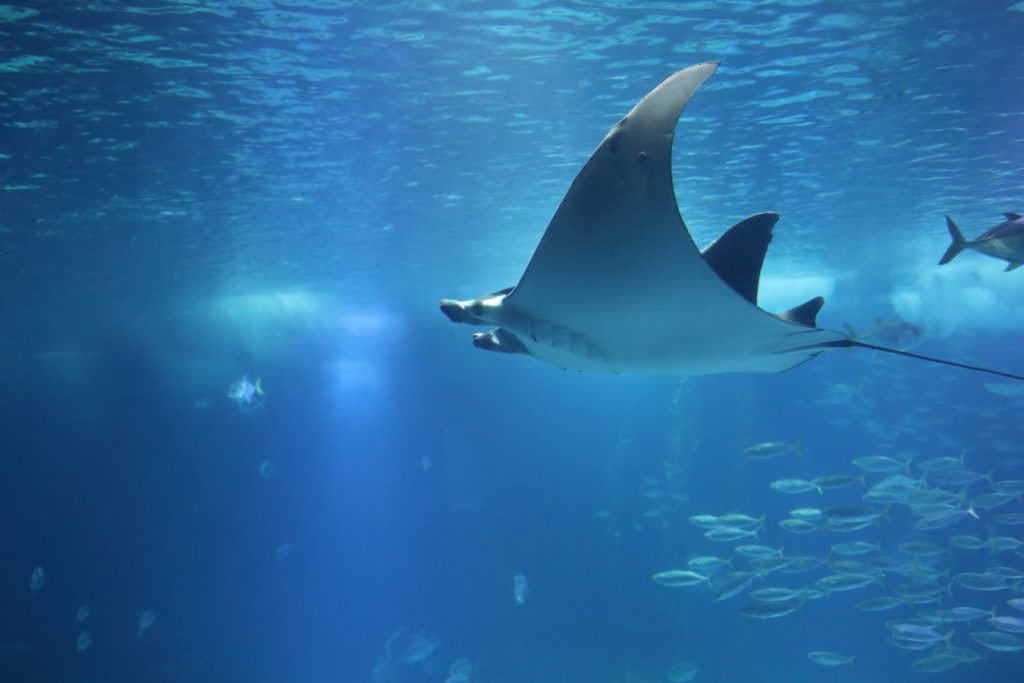Stingrays are some of the most unique sea creatures that exist today. They are known for their friendly expression and sharp, stingingbarbs making them a particular standout creature at Tynemouth Aquarium. Although they are rather slim, their shape cannot be mistaken for anything else, with wide wings that allow them to gracefully glide through the waters they inhabit.
While there are over 200 species of stingray, here at Tynemouth Aquarium you’ll find the striking polka-dot stingrays (Potamotrygon leopoldi). Also known as the Xingu River stingray, this particular species is endemic to the Xingu River basin in the Amazon, although you can see it for yourself in our River Giants exhibit, which mimics the warm waters of South American rivers such as the Amazon, Orinoco and Essequibo.
In this blog, we’ll teach you how to draw your very own polka-dot stingray so you can learn more about its shape and features, complete with a handy video to help!
What will I need?
To start with, you’ll need the following items:
- Pencil
- Sheet of paper
- Colouring pencils/pens
- Eraser
Draw a stingray in 7 easy steps
- Start by drawing a curved line for the front of the body.
- Secondly, you should draw a bow-shaped curve for the back of the stingray. This completes the main parts of the body.
- Add a curved line to the right side of the body to show the stingray’s fins moving in the water.
- Add a tail at the back of your stingray by drawing 2 curved lines and joining them at a point at the end.
- Draw two small circles for the eyes towards the front of the stingray, leaving a white dot inside each of them. Don’t forget to give your stingray some personality by adding a curved line for the smile. Once you’ve got the outline, start to neaten up the lines and shape of the stingray.
- Colour in and add dots to bring your polka-dot stingray to life. Polka dot rays are usually black with white spots, but you can colour your ray any colour! We’ve chosen blue with white spots as blue is our favourite colour.
7 Facts About Stingrays
- Much like sharks, stingrays don’t have any bones. They are instead made up of cartilage, like your nose and ears.
- Most stingrays spend the majority of their time alone. They tend to only join other rays when it is time to breed or migrate. A group of stingrays is called a fever.

- Stingrays date back over 150 million years, to the Jurassic period. This means they were around at the same time as the dinosaurs!
- Rays vary greatly in size ranging from the 10cm short-nose electric ray all the way to 7m wide manta rays.
- Due to overfishing and habitat loss, 107 species of stingray are listed as threatened on the IUCN Red List. This is why conservation, such as that at Tynemouth Aquarium is so important.
- Stingrays rely on their sense of smell and electroreceptors (special pores around their faces that can detect the electrical currents given off by sea creatures) to find food.
- Stingrays are born fully developed, meaning they can swim and find food on their own. Because of this, they don’t need protection from their parents at any point.
Now that you’ve learnt how to draw a polka-dot stingray, it’s only right that you come and show your portrait to our stingrays at Tynemouth Aquarium. Our aquarists would be happy to point the rays out and tell you all about them! Book your tickets online today.
